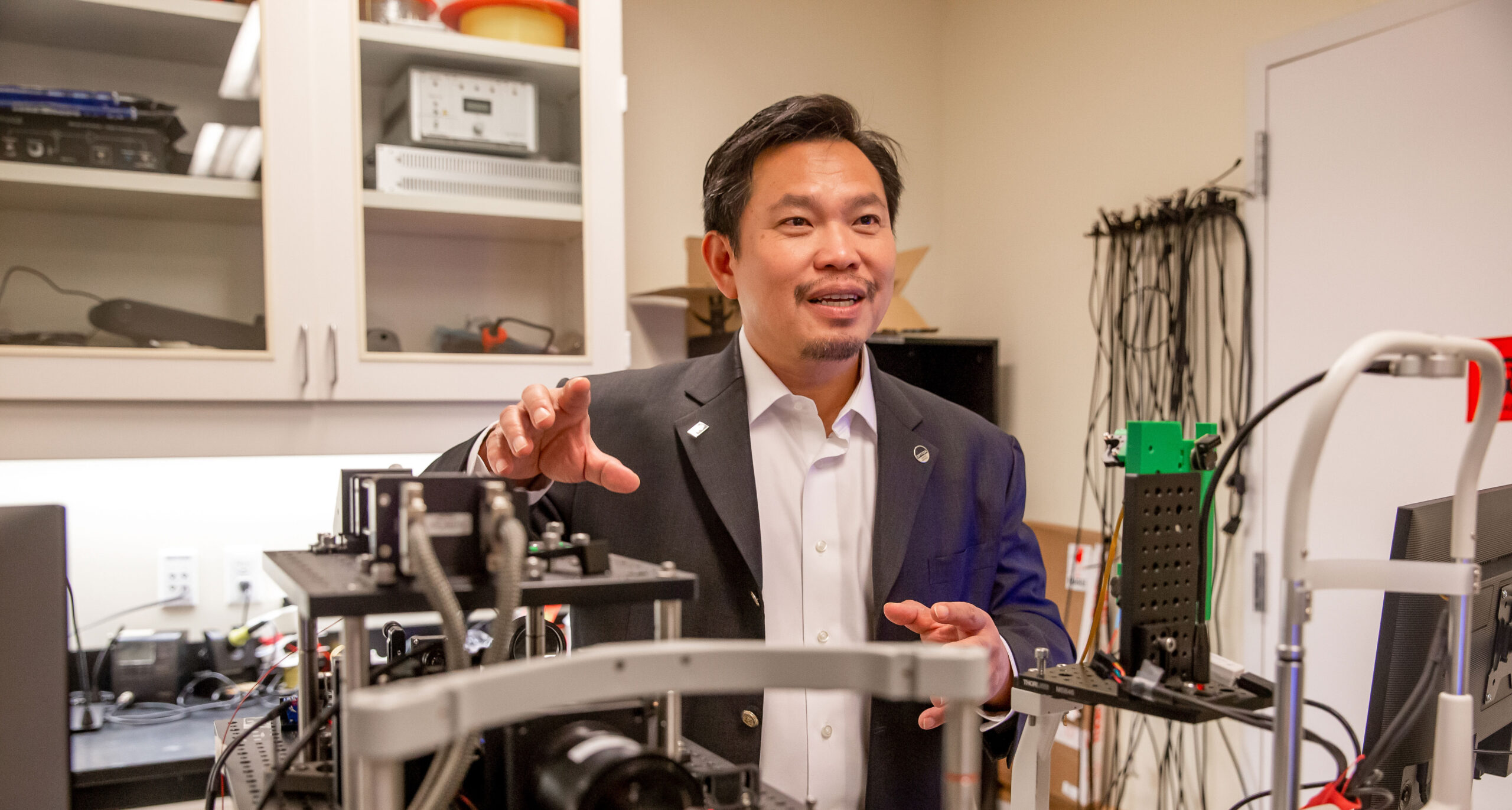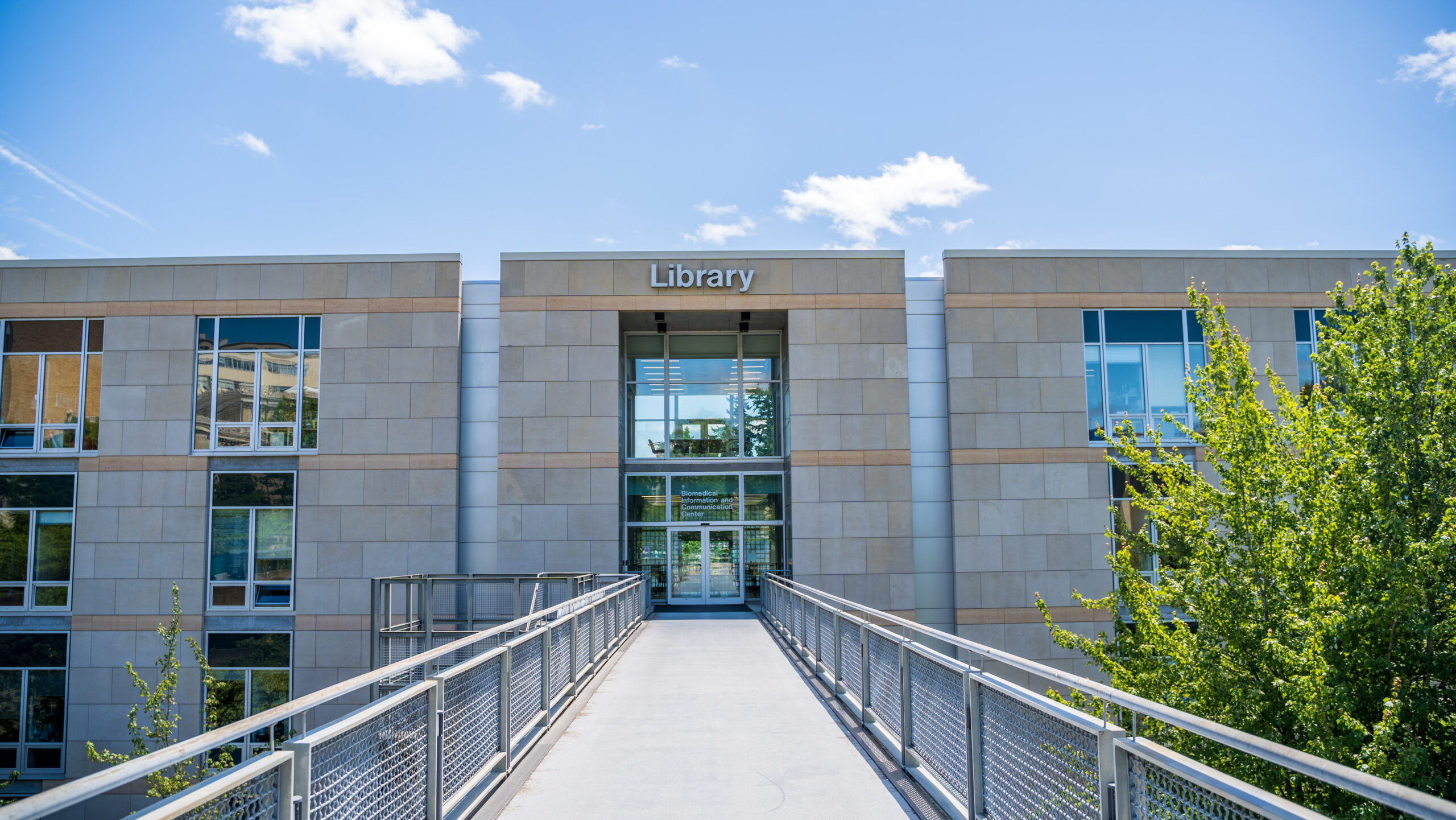OHSU Knight Cancer Institute Director Brian Druker, M.D., is famous for ignoring the conventional wisdom. He disregarded those who called his research “voodoo science” and his work resulted in GleevecTM – a landmark drug proven effective in 10 types of cancer.
In selecting Sadik Esener, Ph.D., to lead the institute’s newly established Center for Early Detection Research, Druker and his team demonstrate they are still finding new ways to solve longstanding problems. Although other institutions might have called on a physician or biologist for this critical role, OHSU believes that reinventing the field of early cancer detection is a job for an engineer.
“Our goal requires that we completely reimagine early detection,” said Druker. “Sadik has the relentless energy and creative thinking that is a hallmark of the OHSU culture.”
Esener is an electrical and computer engineer, physicist and trailblazer in the fields of nanotechnology and nanomedicine. A divergent thinker with a successful record of transforming his ideas into products that benefit patients, Esener is a natural choice to lead the team that will re-engineer cancer detection from the ground up.
His arrival is an important milestone in the institute’s effort to develop tools that catch cancer earlier and with more precision than today’s tests. Accordingly, OHSU has granted him a prestigious faculty post — the Wendt Family Endowed Chair in Early Cancer Detection. Forming and leading highlevel scientific teams is not new to him. At the University of California, San Diego, Esener directed the Center for Cancer Nanotechnology Excellence and has been involved in a host of interdisciplinary collaborations involving universities, private corporations and government agencies.
“He would be the world’s greatest recruit standing on his scientific accomplishments alone,” said OHSU President Joe Robertson, M.D., M.B.A., “But that’s not all he brings to the table. He’s also an entrepreneur who has been able to bring those scientific discoveries to patient care. That’s what we want.”
New ammo for fighting cancer
Esener’s laboratory at UCSD is world renowned for the creative way it uses nanotechnology and optical engineering methods to develop cancer diagnostic and drug delivery systems. One recent example is what he refers to as a “micro-cannon,” a miniaturized structure that aims and fires cancer drugs at specific sites in the body with pinpoint accuracy. The entire assembly is non-toxic and small enough to be injected into tissues or blood vessels without risk to the patient. The cannon barrel is a hollow tube formed from a special type of polymer material packed full of miniscule gel capsules that contain cancer drugs. Researchers use ultrasound waves to fire these “nano-bullets” at the tumor. The goal is to achieve more benefit with lower drug doses by getting the right medicine to the right spot. The approach requires fluency in cancer biology, electrical engineering, nanomaterials science, advanced imaging and physics — exactly the multidisciplinary approach required to advance early detection.
“Some of the most exciting technologies in cancer detection and treatment today arise at the convergence of nanotechnology, optical engineering, immunology and advanced computing,” said Esener. “All of these things are developing at once. OHSU will be the place where it all comes together.”
A convergence of new technology and old-fashioned grit
To bring those pieces together faster at OHSU, Esener will build a scientific team whose collective impact will far exceed that of any one superstar scientist. Esener cites Einstein and Edison as his scientific role models, along with his grandfather — who worked as a research assistant in Marie Curie’s Paris laboratory.
“I have a strong respect for history,” said Esener. “I was inspired by the tenacity of the Curies — of working hard for something you believe in. I also believe Brian Druker falls into that same category, which for me is one of the most exciting things about joining OHSU.” Those perspectives will guide his hiring strategy as he identifies the 25 to 30 leading scientists who will form the nucleus of the Center for Early Detection Research.
Time and space
OHSU will invest a significant portion of the more than $1 billion raised through the Knight Cancer Challenge in what all scientists need more of: time and space. The early detection center will occupy a new seven-story laboratory facility designed by researchers for researchers. (See page eight for more detail). Members of the Knight Cancer Institute faculty worked intensively with architects to create a collaborative workspace in which ideas and expertise could flow seamlessly from lab to lab. And, thanks to donor support of their research, they will be largely freed from the all-consuming task of applying for federal research grants. Even today’s best scientists must compete fiercely for a portion of the shrinking federal biomedical research budget, diverting as much as half of their time away from their laboratories. Knight Cancer Challenge donor dollars will cover the salaries and basic operating costs of the early detection team so their progress will not be strictly dependent on other sources of outside funding.
Reason to hope
Like so many of us, Esener has experienced personal loss due to cancer. He lost his wife and his mother to the disease. “I got involved with cancer before it hit my family,” he said. “But when my wife was diagnosed with colorectal cancer, and a few weeks later my mother was diagnosed with pancreatic cancer — it affects you tremendously.”
Those experiences firm his resolve and fuel his personal hope that this really is our moment to turn the tables on cancer. “We can be cautiously optimistic nowadays,” he said. “Collectively, we are at a pivotal scientific moment because many new approaches such as fluid biopsies for detection and immunotherapies for treatment are presently emerging from research laboratories.”
What’s next? We need to understand which forms of cancer are likely to become lethal, and which are not. This will better enable doctors to stop deadly cancers in their tracks and spare patients from unnecessary treatment for non-lethal abnormalities. We need to develop next-generation cancer detection methods and technologies, such as body fluid tests and improved imaging. These are top priorities for the early detection program.
According to OHSU President Joe Robertson, one of OHSU’s biggest strategic advantages against cancer is Esener himself. “He’s just the greatest guy — the guy that you want to live next door to. If you’re going to collaborate, and do so in an innovative way, you need to have those skills to bring people together. You ultimately need to be a nice guy.”




